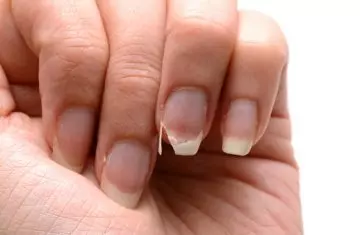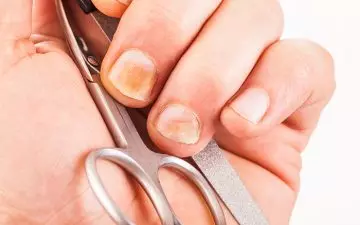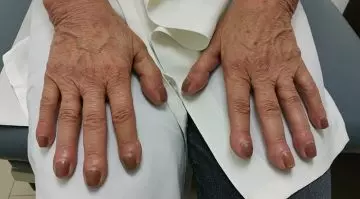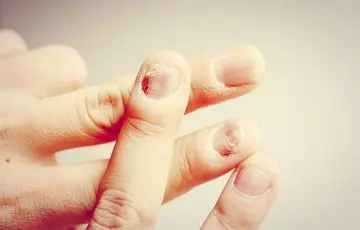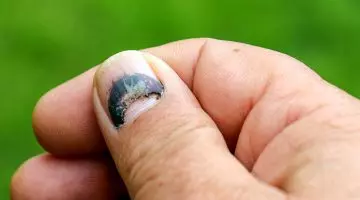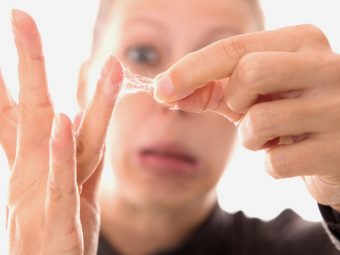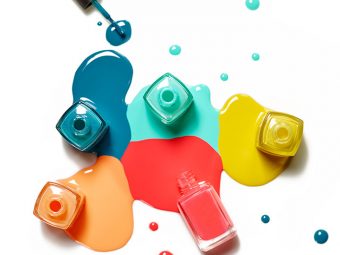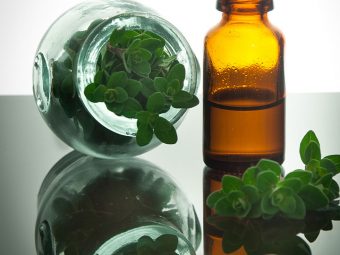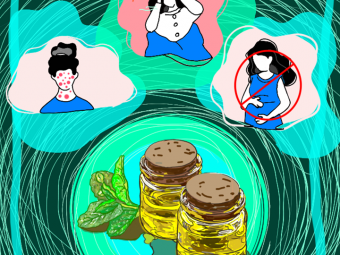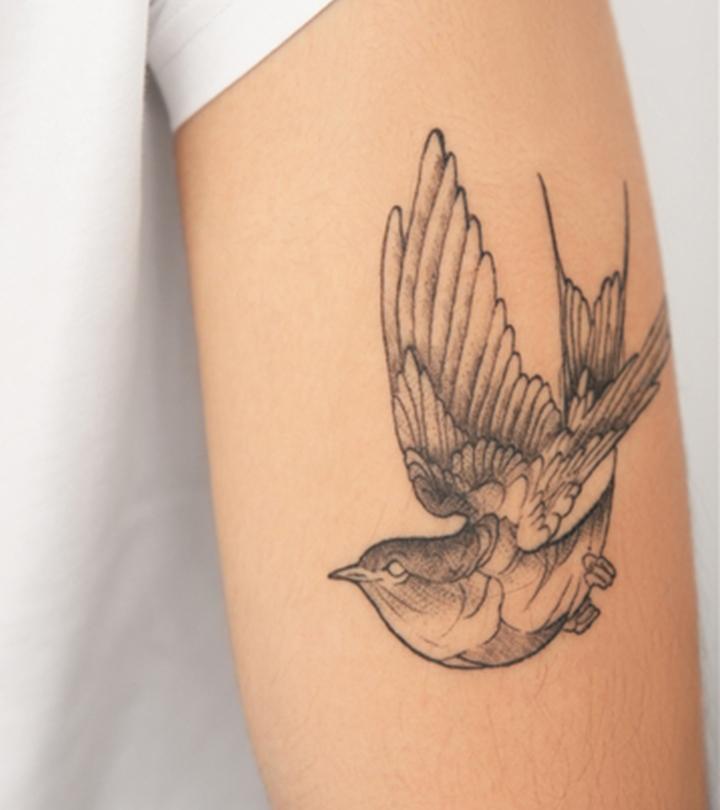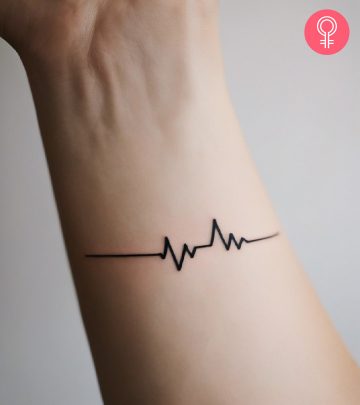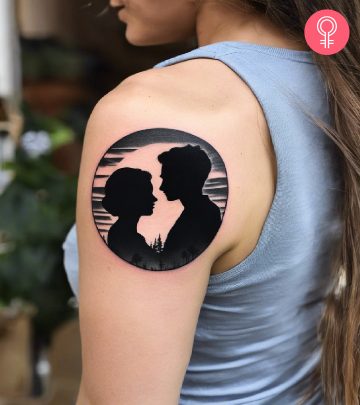This Is What Your Fingernails Are Warning You About

Image: iStock.com
Diseases have an interesting way of manifesting themselves. Sometimes through the eyes, sometimes through the tongue, and yes, sometimes through your nails. Your nails, apart from being the canvases for your artistic strokes, also serve as the peephole to the inside of your body. Chronic and serious systemic diseases, more often than not, reflect in fingernail abnormalities. If you are wondering what I am talking about, read the following list of nail abnormalities and what they speak about your overall health.
1. Chipping Nails
This is one of the most common of all the nail problems. Your nails are brittle and break at the slightest provocation. If this chipping or peeling of nails is happening to you frequently, it could be because of prolonged exposure to water or even overuse of nail polish. With increasing age, the nails inadvertently tend to become brittle. Apart from these minor issues, brittle nails are also suggestive of hypothyroidism. Nutritional supplements, specifically biotin supplements, might help you deal with this problem. Also, protecting your hands during activities involving water like dishwashing, doing the laundry or swimming is essential to prevent your nails from becoming brittle. Make sure you moisturize your hands twice or thrice every day to get healthy and attractive nails.
2. Yellow Nail Syndrome
In this syndrome, your nails become thick and yellow, and sometimes, there is also a greenish tinge to them. The most common medical problem associated with yellowing of the nails is an inefficient lymphatic system. Yellowing of the nails also suggests fungal infections and lung abnormalities, like the accumulation of excess fluid in the cavity in which the lungs sit. If you experience breathlessness and difficulty in breathing apart from the yellowing of nails, see a doctor immediately. Sometimes, a Vitamin E supplementation shows significant reduction in the Yellow Nail Syndrome.
3. Nail Pitting
If you find pit-like depressions on the surface of the nail, such a condition is called nail pitting. The most common reason for the occurrence of nail pitting is the fungal infection psoriasis, and the pitting increases when psoriasis becomes severe and persistent (1). These depressions can also form on the nail as a result of certain connective tissue disorders or inflammation of the skin. Apart from finding holes or white spots on the nail, you will also experience discoloration and deformation of the nail. Treating nail pitting, like most other nail problems, takes time and the results can be seen only in the long term. However, phototherapy and Vitamin D3 supplementation are recommended for people suffering from nail pitting. Consuming sufficient water, moisturizing your nails regularly, and wearing thin cotton and nitrile gloves when there is a contact with water will help you reduce the problem of pitting.
4. Nail Clubbing
Nail Clubbing is a condition in which the angle between your cuticles and the nails becomes 180 degrees. Interestingly, Hippocrates was the first one to observe such a thing as nail clubbing and hence named this condition “Hippocratic fingers.” Along with nail clubbing, you might also find that your nails appear to be floating rather than being attached to the fingers. Apart from that, your nail beds become soft, warm, and red. All these are mostly associated with lung cancer (2). However, it also occurs when there are other heart and lung abnormalities. Congenital heart diseases, cirrhosis, and cystic fibrosis are other such diseases in which nail clubbing is seen. Nail clubbing also occurs without an underlying disorder in the body, but that is very rare. If you find your nails curving and clubbing in this way, immediately consult a doctor and also make a note of things such as when you started observing this, if the clubbing was followed by nails going blue, and if it has worsened from the time you observed it.
5. Spoon Nails
Spoon nails are exactly opposite to the above-mentioned digital clubbing. In this condition, the nails curve like a spoon into a concave shape, unlike the regular flat appearance. One of the most common causes of spoon nails, medically termed Koilonychia, is iron deficiency. This disease, also known as anemia, in turn, could have been caused by multiple factors like malnutrition, trauma, and even extreme gastrointestinal blood loss. Researchers say that this could happen to people who live in high altitudes and is also hereditary (3).
6. Cyanosis (Blue Nails)
When the nails don’t get enough oxygen, they tend to become blue. Sometimes, in freezing temperatures, the blood vessels constrict and make it difficult for the blood to flow unobstructed. This deprives the nails of oxygen-rich blood, and this hypoxic condition turns the nails blue. However, this is temporary. Simply massage the area to increase blood circulation. Sometimes, the blue coloration of the nails is more serious than mere temperature changes and could suggest an internal heart or lung problem like congestive heart failure or pneumonia. If you observe symptoms like numbness in the extremities or breathlessness, it could be an emergency, and it is wise to call for help or visit the hospital immediately.
7. Terry’s Nails – White Nails
The way doctors diagnose Terry’s nails is by observing that the entire nail looks white, but there’s a characteristic brown arc at the end of the finger. One of the reasons for the nails to appear white is insufficient vascularity and reduced blood circulation. Also, kidney failure, cirrhosis or a heart problem like congestive heart failure could all be lurking inside the body but manifest themselves in the form of white nails. People suffering from diabetes or hypothyroidism also find their nails appearing white. In this condition, the nail lacks lunula (the white crescent-shaped patch seen at the tip of the fingernail).
8. Dark Vertical Stripes Under The Nail
Stripes under the nails are usually due to increased pigmentation in the skin under the nail. This is a common sight in people with darker skin. However, sometimes, this could happen because of vitamin deficiencies, physical injury, or some other medical systemic conditions as well. Although it is usually not a sign that should worry you, unless you find the pigmentation only on one finger, that too, on the thumb. This could mean you have a kind of cancer known as subungual melanoma. If you find the pigmentation to be increasing in width or darkness, or if it is radiating towards the cuticle, meet the doctor without waiting for the situation to worsen further.
9. Red Nails
A red or brownish red appearance of the nail could be a result of physical trauma or a fungal infection. Sometimes, it could also be a signal that you have a cardiac problem. Do not ignore if your nail beds have become red, for, it may be something as serious as heart failure. Also, the lunula of the nail tends to become red, which could be because of psoriasis, carbon monoxide poisoning, and cardiac failure. Do not postpone your meeting with the doc if you find your nail beds or the lunula in red color.
10. Loose Nails
Technically, loose nails in the fingers or toes are called onycholysis. The two primary reasons for your nails to become loose are injury and infection. A fungal infection causes your nails to loosen, apart from causing discoloration and nail thickening. If you got injured by a blunt object, it too might be a potential cause for loose toenails. Speaking of toenails, people who indulge in excessive hiking, jogging or walking cause repeated trauma to the nails. Make sure you wear comfortable shoes and clip your nails regularly to avoid this problem.
A chipped nail or a pitted appearance might not appear serious at first, but now that you know what it could be indicating, keep a check on your nails and act immediately if you find something not-so-normal. Also, this article is a brief overview to make you understand what nail abnormalities are about. Hence, do not try to diagnose your nail problems at home. Rather, go to the GP, for, he must have nailed the nail diagnosis already. Comment below and tell me if you have observed any such problems with your fingernails.

